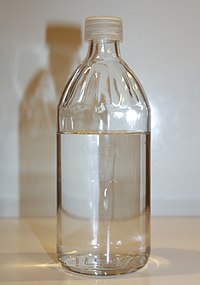
Photo from wikipedia
A new strategy was proposed that simultaneously improves the pervaporation (PV) performance and solvent resistance via the construction of a movable crosslinked structure in ethyl cellulose/polyvinylidene fluoride (EC/PVDF) composite membrane… Click to show full abstract
A new strategy was proposed that simultaneously improves the pervaporation (PV) performance and solvent resistance via the construction of a movable crosslinked structure in ethyl cellulose/polyvinylidene fluoride (EC/PVDF) composite membrane for the purpose of benzene/cyclohexane separation. Based on the molecular design of the macrocyclic compound cyclodextrin, polyrotaxane crosslinking agent (PR=) with a special sliding/rotating property and cavity structure was successfully synthesized. Furthermore, for convenient comparative study, cyclodextrin crosslinking agent (CD=) with cavity structure bereft of a sliding/rotating property and pentaerythritol triacrylate (PETA) without sliding/rotating property and cavity structure were prepared. The composite membranes were fabricated with crosslinking modified EC as active layer, together with PVDF support layer. The molecular structure and microstructure were confirmed. The pervaporation and swelling performance of the fabricated membranes for benzene/cyclohexane were investigated. PR= modified membranes showed good solvent resistance and exhibited a flux of 4332 g·m −2 ·h −1 and separation factor of 6.26, which was higher than CD= and PETA modified membranes. The results were attributed to the facilitated transport behavior, which was markedly related with the sliding/rotating property and cavity structure of polyrotaxane (PR). The related research provides interesting suggestions for PV membrane design for the separation of organic mixtures.
Journal Title: Journal of Materials Science
Year Published: 2020
Link to full text (if available)
Share on Social Media: Sign Up to like & get
recommendations!